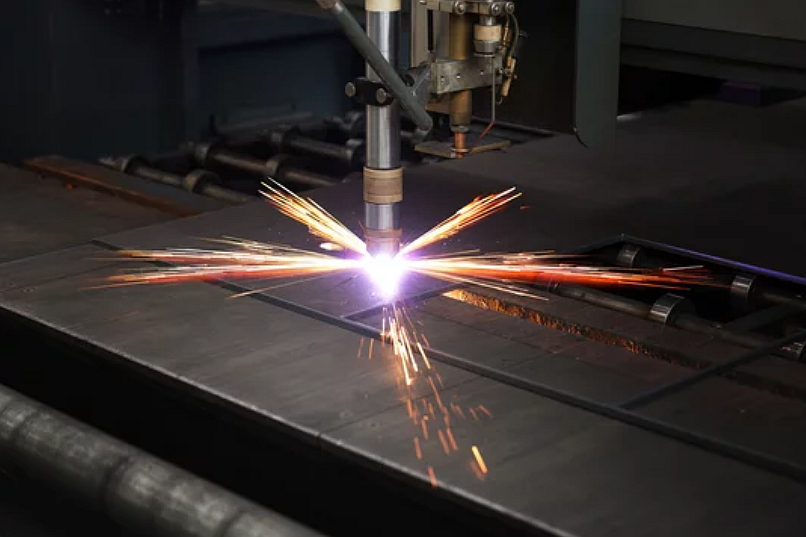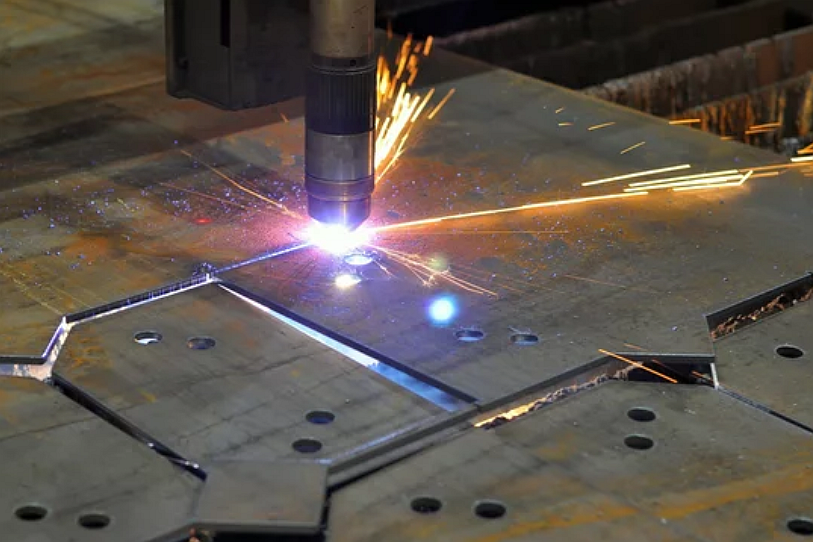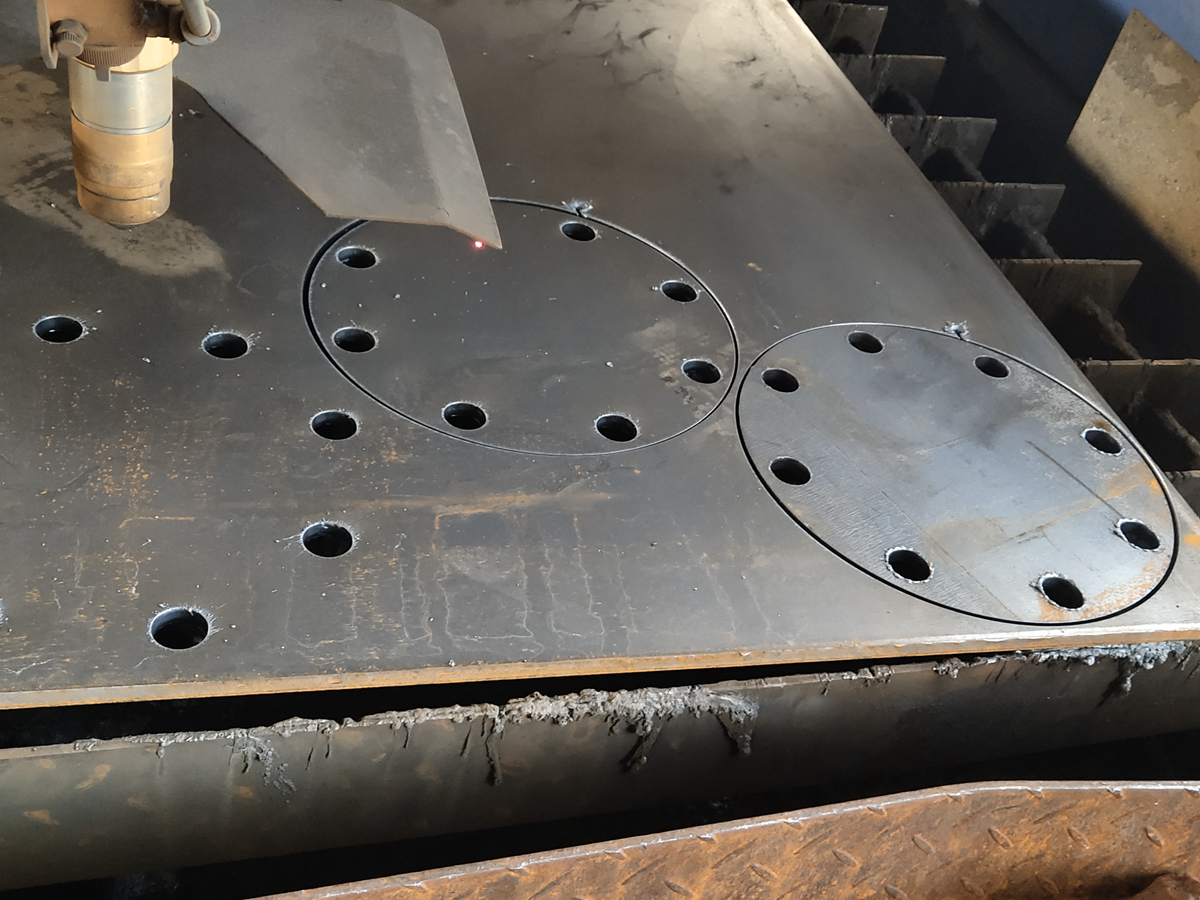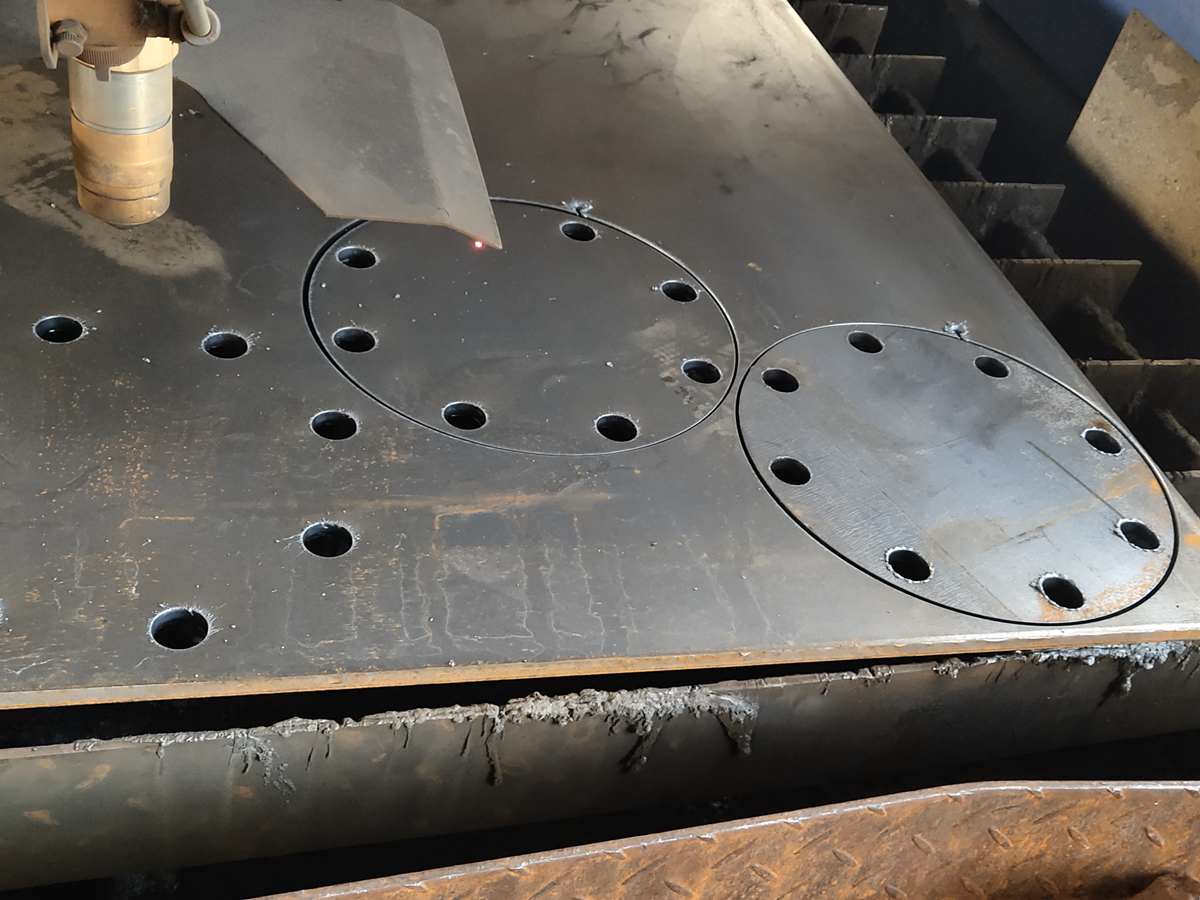What is Plasma Cutting Service Used for?
Plasma cutting is an essential sheet metal fabrication service used in many industries to cut metal precisely and efficiently. A plasma cutter produces a boiling, directed flow of ionized gas called plasma that melts the metal and creates a kerf or cut. The high temperature of the plasma, which can reach up to 40,000°F, allows for fast, clean cuts through metal with minimal warping. Here are some of the main applications and uses for plasma cutting services:

Manufacturing and Fabrication
Plasma cutting is widely used in manufacturing and fabrication to cut steel and other metals to size for creating parts, structures, and end products. It is an ideal cutting method for structural steel, plate metal, pipes, tubing, and sheet metal. Plasma can cut thick stainless steel, aluminum, brass, copper, and other conductive metals neatly and accurately. Its precise, fast cuts make plasma an efficient technique for high-production manufacturing.
Automotive Industry
The automotive industry uses plasma cutting to create custom parts and structures from various metals. It is commonly used to cut steel and aluminum for vehicle frames, chassis components, fuel tanks, and exhaust systems. Plasma cutting allows automotive manufacturers to cut thick roll cages and engine components to precise specifications. Using plasma cutting to custom fabricate new body parts; older cars are often restored.
Aerospace
The aerospace industry uses plasma cutting for working with the aluminum, titanium, and heat-resistant alloys needed for aircraft and spacecraft. Plasma cutters can make extremely straight cuts and complex patterns in these metals for wings, fuselages, and other aerospace structures. The process is also used to salvage and dismantle retired aircraft.
Construction and Demolition
Plasma cutting is widely used in the construction industry to cut structural steel beams, pipes, square tubes, and metal plates for buildings, bridges, and other structures. It is also used to demolish steel structures and salvage metal by cutting beams, pipes, and other materials into manageable pieces for removal. The demolition process is cleaner and faster with plasma cutting compared to methods like oxyfuel or abrasive cutting.
Shipbuilding and Offshore
In shipbuilding, plasma cutters are essential for cutting steel plates, pipes, and structural components to size for building ship hulls, decks, and other parts. The ship repair industry relies on plasma cutting to remove and replace corroded or damaged steel parts on boats and ships. Offshore oil platforms use plasma cutting during construction and maintenance.
Metal Sculpture and Art
Artists who sculpt and shape heavy-duty metals rely on plasma cutting for detailed and intricate cuts. The process allows sculptors and metal artists to cut and craft steel, copper, titanium, and other metals into two- and three-dimensional art pieces. Plasma cutting enables creativity and precision for metal artwork like sculptures, wall art, fountains, and more.
Custom Metal Fabrication
Metal fabrication shops and artists for custom metalwork and specialty parts use plasma cutting. Custom orders for decorative metal signs, railings, gates, furniture, countertops, and many other products are produced using plasma cutters. The technique is ideal for specialty fabrication because it can precisely cut intricate designs and bevel cuts.
HVAC and Plumbing
Heating, ventilation, and air conditioning technicians use plasma cutting to create ductwork and fittings from sheet metal. Plumbers also rely on the process to precisely cut and fit pipes for water, gas, drainage, and other plumbing systems. Portable plasma cutters allow for onsite custom fabrication for HVAC and plumbing jobs.
Maintenance and Repair
For maintaining and repairing large industrial equipment and structures, plasma cutters are essential for component removal and replacement. Damaged, corroded or worn parts on heavy machinery, large vehicles, boilers, turbines, pipelines, and commercial buildings can be renovated or replaced quickly using plasma cutting. It is helpful for any maintenance job that requires removing thick metal parts.
Joining and Welding
While not a welding technique, plasma cutting is often used with welding processes like TIG and MIG. Precision plasma cuts help create clean welding edges, ensure properly fitted joints, and prepare metal for binding other parts. The minimal heat-affected zone of plasma cutting avoids warping, so parts fit together accurately during welding.
Sheet Metal Cutting
Plasma-cutting machines can accommodate sheet metal cutting for ductwork, signs, furniture, architectural metal, and other fabrication. The plasma cutter's small kerf and fast cutting speed allow for efficient cuts in thin sheet metals like stainless steel, copper, brass, and aluminum. Sheet metal workers rely on plasma for rapid prototypes, small batch production, and precision sheet metal parts.
Underwater Cutting
Specially designed underwater plasma cutters are used to cut metals underwater for marine salvage operations and underwater construction and demolition projects. This specialized application uses plasma's ability to operate underwater by preventing water contact with the arc through a compound water vortex.
Cutting Refractory Metals
While difficult to cut using other methods, refractory metals like niobium, molybdenum, tantalum, and tungsten can be precision cut using plasma. The extremely high temperature of plasma erodes these hard, heat-resistant alloys. It makes plasma effective for cutting refractory metals used in specialized applications.
Precision Cutting and Hole Making
For applications requiring maximum precision, plasma cutting delivers highly exact, straight cuts with a very narrow kerf. The CNC controls of computer numerical control (CNC) plasma tables enable exact repetitive cutting. Plasma also makes clean, precise holes for aerospace and medical manufacturing industries.
Architectural and Ornamental Metals
Decorative metal structures, railings, gates, screens, light fixtures, and architectural metal accents rely on plasma cutting for artistic detail. Custom metalwork for buildings, monuments, entryways, fences, street furniture, and landscapes, always using plasma for cutting and shaping.
Rapid Prototyping
Plasma cutting's ability to quickly and accurately produce parts from metal makes it ideal for rapid prototyping services. Companies can use CNC plasma cutters to swiftly create concept models, prototypes, and scale models to test form, function, and manufacturability during design.
Resource Extraction and Mining
For the resource extraction and mining industry, plasma cutting is essential for cutting and dismantling machinery, infrastructure, and equipment. Plasma cutters can reliably cut the thick metal parts found on excavators, crushers, loaders, conveyors, drilling rigs, trains, and other mining equipment.
Nuclear Power and Energy
Cutting extremely thick and stainless steel is required in nuclear power plants and other energy facilities. Plasma cutting is up to the task of cutting dense metal containment vessels, piping, components, and infrastructure for nuclear, coal, gas, wind, and other power plants.
Automated Cutting and Production Lines
For high-volume production, automated plasma-cutting machinery maximizes output. Multi-torch CNC plasma cutting tables with automated loading and unloading integrate with other fabrication machinery like press brakes, robotic welders, and machining centers for automated start-to-finish production.
Military and Defense
The aerospace, marine, and ground vehicle industries that supply the military employ plasma cutting extensively for component fabrication. Plasma cutters are also directly used by military maintenance and repair crews for cutting metal parts at bases, in the field, or at sea.
Rail and Mass Transit
Plasma cutting is essential for rail industries to manufacture train bodies, sleepers, connecting elements tracks, and train wheels. Cutting thick steel is required for fabricating rail transport infrastructure like train bridges, tunnels, rail yards, and rail equipment maintenance.
Farming and Agriculture
For repairs and maintenance of heavy agricultural machinery and equipment, plasma cutters help cut steel parts like chassis, frames, blades, buckets, and attachments. Farmers also rely on plasma cutters for cutting and repairing steel barns, silos, livestock equipment, and tools.
Motor Sports
The motorsports industry relies on plasma cutters for cutting stainless steel and aluminum for specialty vehicle bodies, engines, chassis parts, and accessories. The precise cutting and low heat input help create lightweight custom components for high-performance cars, motorcycles, boats, and aircraft used in racing.
In summary, plasma cutting is a beneficial metal fabrication technique with numerous applications across many industries. It can precisely cut any electrically conductive metal with clean, fast results. Plasma cutting is a versatile metalworking process vital in manufacturing, construction, maintenance, design, prototyping, and more. Advances in plasma technology and automated CNC plasma systems continue to expand the possibilities for this crucial metal-cutting method.



